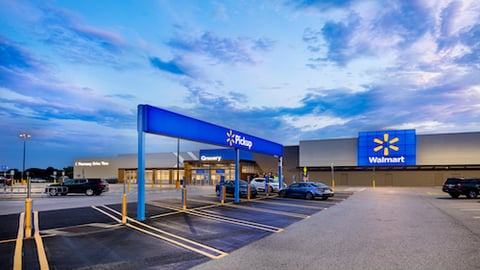E-Commerce and the Value Shopper
The “value shopper” has always represented both an opportunity and a challenge for retailers looking to engage and activate the cost- and convenience-focused shoppers who warrant this designation. Now, as the economy continues to struggle, this group is growing. Additionally, since health concerns have remodeled the value equation, driving more consumers online for their grocery shopping, the challenge to consistently activate these shoppers has become increasingly complex.
So, what must retailers do to position their e-commerce platform as a means for these consumers to find the personal value they so actively seek?
Make it easy for shoppers to find savings opportunities
Simplify the search for savings by including direct links or gallery views of the digital circular, promotions and coupons on the homepage. Spotlight on-sale products that are relevant to shoppers based upon their past purchases and demonstrated preferences. Lastly, ensure that all applicable offers are posted on the individual product pages and product tiles so that no matter how shoppers navigate the site, they’re able to find all of the ways they can save money.
Reward shoppers for buying more
Provide greater cost savings as shoppers increase their basket size. For example, offer a $10 voucher on their next order for every $100 spent, or sell products bundled together (for recipes or meals) at discounted prices. Offering subscriptions on select products or product categories is another option. For example, create a subscription program for private label products, or create a program that allows shoppers to receive products at regular cadence (such as health and beauty care), without dictating a specific brand.
Prepare to accept EBT cards for online orders
The SNAP Online Purchasing Pilot has expanded expeditiously and, now households receiving SNAP benefits in 45 states and the District of Columbia can use EBT to pay for groceries purchased online. With Amazon and Walmart as active participants, moving to EBT acceptance represents another way for traditional grocery retailers to compete against, and protect share, from these giants.
Enabling online EBT payments will require infrastructure enhancements for e-commerce functionality to align with EBT processes. However, this investment promises to deliver significant return on investment, as SNAP participants are becoming increasingly active online shoppers and will give their loyalty to those retailers that are able to accommodate their use of benefits for online purchases.
Reward shopper flexibility with additional savings
Incentivizing shoppers to be flexible regarding their online orders will help make order fulfillment more manageable while maintaining positive relationships with consumers. For example, waive or reduce picking fees for curbside pickup orders if a shopper agrees to a pickup time assigned to them rather than one of their choosing. These orders can then be filled based on internal scheduling and when needed resources are available.
Another option is to offer free pickup without a minimum order if shoppers buy from a limited selection of the most commonly purchased products. If properly promoted and managed efficiently, this approach could increase retailers’ speed in fulfilling online orders while reducing the average cost of order fulfillment.
Strategically manage fees
Prior to the onset of the pandemic, many shoppers were hesitant to shop for groceries online because of the fees charged for pickup or delivery. While fees no longer appear to be a deterrent, it’s still essential that this aspect of e-commerce be carefully managed so as not to surrender any advantage to the competition.
Developing a dynamic fee structure will help drive specific behaviors and improve perceptions among shoppers. For example, demonstrate appreciation for frequent shoppers by waiving picking fees or setting aside order minimums. Consider waiving fees for first-time online shoppers and/or offer discounted rates for unused fulfillment slots that are set to expire. You can also work with your brand partners to subsidize any fees when shoppers purchase a specified amount of their products.
Enhanced e-commerce will make all the difference
With dire warnings being issued regarding potentially deteriorating conditions this fall and winter, retailers should expect value-conscious, crowd-wary shoppers to continue – and likely increase – their online grocery shopping. Inmar’s latest shopper behavior research finds that 70% of shoppers expecting to maintain their current level of e-commerce activity, and more than 23% saying they anticipate that their online grocery shopping will increase.
Competition for online shoppers’ attention and dollars will increase as well. However, retailers that employ strategies that genuinely help meet shopper demand for value will be advantageously positioned to grow their businesses – regardless of what the next few months may bring to the industry.







